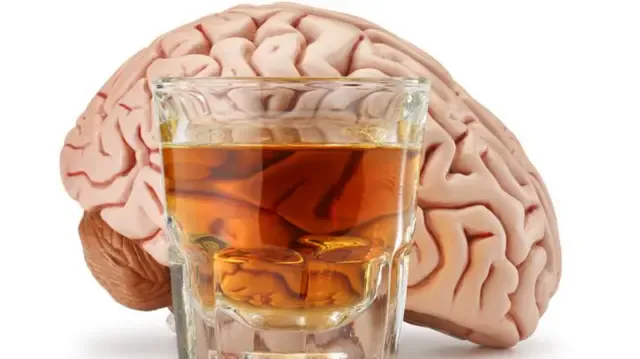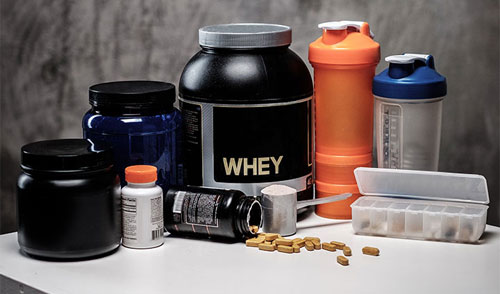Cardio vs Weight Training for Weight Loss: Which Is Better?
Discover which workout burns more calories, how to combine both types of training, and which strategy actually works for sustainable weight loss
If you're looking to lose weight, you've probably wondered: cardio or weight training - which is better? This is one of the most common questions in gyms and among people who want to shed pounds efficiently.
The answer isn't as straightforward as it seems. While cardio exercises burn more calories during the activity, weight training continues burning energy even after your workout ends. But does one replace the other? And which strategy actually works for those who want to see lasting results on the scale?
In this post, I'll show you the practical differences between each modality, what science says about caloric expenditure, and how you can combine both to maximize your results. Get ready to discover the best strategy for your weight loss goals.
Table of Contents
- What Science Says About Caloric Expenditure
- Cardio Exercises: Characteristics and Benefits
- Weight Training: How It Works for Weight Loss
- Direct Comparison: Cardio vs Weight Training
- The Role of EPOC in Weight Loss
- Which Modality Burns More Calories
- The Ideal Strategy for Weight Loss
- How to Combine Cardio and Weight Training
What Science Says About Caloric Expenditure
A study published in the Journal of Strength and Conditioning Research made a direct comparison between weight training and cardio exercises. Participants performed 30 minutes of free-weight squats at 70% of one rep max, while another group cycled at similar intensity.
The result was revealing: cycling resulted in 441 kcal burned, compared to just 269 kcal from weight training in the same period.
To better understand these numbers, it's important to know the concept of MET (Metabolic Equivalent). One MET unit corresponds to a person's energy expenditure at rest, and each activity has its specific value:
- Low-intensity weight training: 3.5 METs
- High-intensity weight training: 6.0 METs
- Moderate running: 11.5 METs
- Intense running: 13.5 METs
This means that during execution, cardio exercises indeed burn more calories. But that's only part of the story.

Cardio Exercises: Characteristics and Benefits
Cardio exercises are activities that use oxygen as the primary energy source and can be maintained for extended periods. They include walking, running, swimming, cycling, and dancing.
Main characteristics of cardio:
- High caloric burn during activity: A 155-pound person burns approximately 560 calories in 1 hour of running at 5 mph
- Fat utilization as fuel: At moderate intensity, the body preferentially uses stored fatty acids
- Cardiovascular improvement: Strengthens the heart and improves lung capacity
- Low injury risk: Especially at moderate intensities
| Activity | MET | Calories/hour (155 lbs) |
|---|---|---|
| Walking (3.5 mph) | 3.8 | 266 kcal |
| Running (5 mph) | 8.0 | 560 kcal |
| Moderate swimming | 8.5 | 595 kcal |
| Water aerobics | 4.0 | 280 kcal |
Why cardio is efficient for weight loss:
Cardio exercise promotes immediate and significant caloric expenditure. During endurance activities, the body primarily uses the oxidative energy pathway, where fat is the main fuel. This means you're literally "burning fat" during the workout.
When starting your cardio journey, you might want to check out some quality gym equipment to help you stay consistent with your workouts, whether at home or at the gym.
Weight Training: How It Works for Weight Loss
Weight training works with resistance exercises, using weights, machines, or bodyweight. Although it burns fewer calories during execution, its benefits for weight loss go far beyond the workout itself.
What happens in your body with weight training:
- Increased muscle mass: Each pound of muscle gained increases your basal metabolism by 6 calories per day
- Improved insulin sensitivity: Makes blood sugar control easier and reduces fat storage
- Bone strengthening: Important for overall health and osteoporosis prevention
- Improved body composition: Reduces fat and increases muscle simultaneously
Caloric burn from weight training:
- Moderate weight training: 315 kcal/hour (155-pound person)
- Intense weight training: 420 kcal/hour (155-pound person)
The great advantage of weight training isn't just what you burn during the workout, but what happens afterward. I'll explain this better in the next section.
For those serious about weight training, consider investing in wellness products that can support your recovery and overall health journey.

Direct Comparison: Cardio vs Weight Training
When we directly compare the two modalities, some points become clear:
During exercise:
- Cardio wins: Burns more calories per minute of activity
- 1-hour run: ~560 calories
- 1-hour weight training: ~315 calories
After exercise:
- Weight training wins: Keeps metabolism elevated for hours
- More pronounced EPOC effect
- Muscle building that permanently increases energy expenditure
For beginners:
- Cardio is more accessible: Lower learning curve
- Weight training requires guidance: Proper technique is fundamental
Sustainability:
- Cardio: Can be done more frequently
- Weight training: Needs rest between sessions
The truth is that both have unique advantages. Cardio is like an "immediate burner," while weight training is a "long-term investment" in your metabolism.
If you're just starting out, you might find our guide on the best home workouts to lose weight fast helpful for getting started without needing a gym membership.
The Role of EPOC in Weight Loss
EPOC stands for "Excess Post-Exercise Oxygen Consumption" and is one of the most important factors for understanding why weight training is efficient for weight loss.
What EPOC is:
After an intense workout, especially weight training, your body needs extra energy to:
- Repair damaged muscle fibers
- Remove metabolic waste
- Replenish energy stores
- Regulate body temperature
How it works in practice:
During this recovery process, which can last from 2 to 24 hours, your metabolism remains elevated. This means you continue burning extra calories even while sitting on the couch watching TV.
Factors that influence EPOC:
- Workout intensity: The more intense, the greater the effect
- Duration: Longer workouts generate greater EPOC
- Exercise type: Compound exercises (working multiple muscles) are more efficient
- Fitness level: Beginners have more pronounced EPOC
That's why, although weight training burns less during the workout, the total expenditure over 24 hours can be similar or even superior to cardio.
To maximize your EPOC effect, you might want to consider adding some quality supplements to support your recovery and muscle building efforts.
Which Modality Burns More Calories
The answer depends on how you measure: just during exercise or over the total 24-hour period.
Practical calculation for a 155-pound person:
Cardio (45-minute run at 5 mph):
- During: 420 calories
- EPOC (2h): ~50 calories
- Total: 470 calories
Weight training (45 minutes intense):
- During: 315 calories
- EPOC (12h): ~200 calories
- Total: 515 calories
Factors that influence expenditure:
- Age: Metabolism decreases with age
- Gender: Men generally burn more calories
- Body weight: Larger people expend more energy
- Fitness level: Beginners burn more per movement
- Intensity: The most important factor of all
Technology for measuring:
Nowadays, smartwatches and fitness trackers can give you a fairly accurate estimate of your caloric expenditure. For more precise measurement, consider using a smartwatch specifically designed for physical activities.

The Ideal Strategy for Weight Loss
After analyzing all the scientific data, the conclusion is clear: the combination of cardio and weight training is superior to any isolated modality.
Why the combination works better:
- Maximizes caloric expenditure: You get the immediate burn from cardio and the prolonged effect from weight training
- Preserves muscle mass: During weight loss, it's common to lose muscle along with fat. Weight training prevents this
- Improves body composition: You don't just lose weight, but end up with a more defined body
- Increases adherence: Variety reduces boredom and maintains motivation
What studies show:
Research indicates that people who combine cardio and weight training:
- Lose more body fat
- Maintain more muscle mass
- Are less likely to regain lost weight
- Show better overall health markers
To boost your results, also consider adjusting your nutrition. Check out our guide on complete strategies for weight loss.
Supplementation that can help:
Supporting your combined training approach with proper nutrition and supplements can make a significant difference. Consider exploring high-quality supplements that can support your fitness goals, and don't forget about the importance of a balanced diet approach to maximize your results.
How to Combine Cardio and Weight Training
Now that you know the combination is ideal, the question is: how do you do this in practice?
Option 1: Alternating Days
- Monday/Wednesday/Friday: Weight training
- Tuesday/Thursday/Saturday: Cardio
- Sunday: Active recovery (light walk)
Option 2: Same Day (Combined Training)
- 20-30 min weight training + 15-20 min cardio
- Ideal for those with limited time
- Do weight training first to have more energy
Option 3: HIIT (High-Intensity Interval Training)
- Combines strength and cardio in one workout
- 20-30 minute sessions
- High intensity, maximum results
Example of an ideal week:
| Day | Modality | Duration | Intensity |
|---|---|---|---|
| Monday | Weight training | 45 min | Moderate/High |
| Tuesday | Cardio | 30 min | Moderate |
| Wednesday | Weight training | 45 min | Moderate/High |
| Thursday | HIIT | 25 min | High |
| Friday | Weight training | 45 min | Moderate/High |
| Saturday | Long cardio | 45-60 min | Low/Moderate |
| Sunday | Active recovery | 30 min | Low |
Important tips:
- Start gradually: If you're a beginner, don't try to do everything at once
- Listen to your body: Pain is a sign that something's wrong
- Vary the stimuli: Change exercises to avoid adaptation
- Maintain consistency: Better to train 3x per week consistently than 6x one week and then stop
Pre and post-workout nutrition:
To optimize your results, it's crucial to know what to eat before and after workouts. Proper nutrition can significantly increase your caloric burn and recovery.
If you're looking to work out at home, consider investing in some home treadmill options to ensure you can maintain your cardio routine regardless of weather or schedule constraints.
Home workouts:
If you don't have access to a gym, don't worry. There are excellent exercises to lose weight that you can do at home, combining cardio movements and strength training.
To deepen your knowledge:
If you want to become an expert on the subject, I recommend some excellent books. You can find comprehensive resources about diet and fitness books that cover everything from exercise science to nutrition strategies for optimal weight loss.
For those interested in incorporating mindfulness into their fitness journey, exploring meditation resources can help with stress management, which is crucial for sustainable weight loss.

Conclusion: What's the Best Choice?
After analyzing all the scientific and practical aspects, the answer is clear: there is no "better" between cardio and weight training for weight loss. Each modality has its unique advantages, and the intelligent combination of both is always superior.
If you have to choose just one:
- Choose cardio if: You're a beginner, have limited time, want quick results on the scale, or have physical limitations
- Choose weight training if: You want to change body composition, fear the yo-yo effect, or want long-term benefits
But always remember:
Exercise is just one part of the equation. Sustainable weight loss fundamentally depends on a consistent caloric deficit. This means expending more energy than you consume, and this is only possible with balanced nutrition.
Next steps:
- Assess your current level: Be honest about your physical condition
- Set realistic goals: Small consistent progress beats big temporary changes
- Seek professional guidance: A fitness trainer can customize workouts for your goals
- Be patient: Real changes take time, but they're lasting
Additional resources:
- For a complete view on weight loss: Complete weight loss guide
- To gain muscle mass simultaneously: How to gain muscle mass
- To better understand carbohydrates: Everything about carbohydrates
- To understand the difference between training types: Cardio vs weight training comparison
The most important thing is to start. Whether with a 15-minute walk or basic strength exercises at home, the first step is always the hardest. But once you create the habit of exercising regularly, combining cardio and weight training, you'll be on the right path to achieving your goals in a healthy and sustainable way.
Remember: the best exercise is the one you can do consistently. Start slow, be patient with results, and celebrate every small victory. Your body and mind will thank you for this lifestyle change.
To support your journey, consider exploring comprehensive wellness products that can help you maintain a holistic approach to health and fitness. And don't forget that proper sleep is crucial for recovery - check out our guide on improving sleep quality naturally to maximize your weight loss results.

